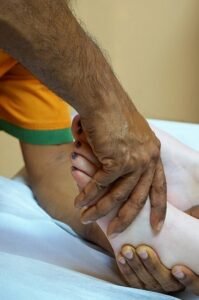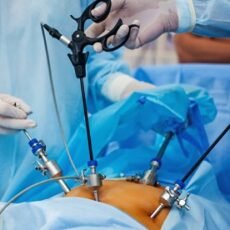This must be the hardest post to start writing. I’m going to let you in on a little secret I’ve been harboring about my fertility massage experience.
Strange, really when you think about the topics I’ve poured my heart out over so far – my health, my infertility, my miscarriages.
So what’s with the hesitation to write about a massage?
Well, it’ll become clear shortly because I’ve decided – after much reflection – to write about it.
People may judge me on this and I am, as they say, making myself vulnerable by sharing something so private. But there’s a need inside me just to write it like it is.
This is my experience of life and I think I’ll get more out of my time here and hopefully help others by sharing my experience with my massages to increase fertility openly.
I’m not saying that I’m totally comfortable with my family reading this blog though, but hey, if you are my family and you’re reading this than feel free to read on but know that it may get uncomfortable for you.
Let’s Look at the Benefits of a Fertility Massage
Before going on with my post let’s briefly look at the benefits of massages for fertility.
- Improves lymphatic, circulatory & nervous systems by increasing blood flow to reproductive & pelvic organs by relieving congestion & misalignment to these organs.
- Strengthens and tones the uterus and surrounding ligaments to optimize fertilization and embryo implantation.
- Increases a sense of well being, strengthening the immune system, and stimulating the balanced production of hormones.
Maya Abdominal Massages Not Like a Fertility Massage
 Let me get to the story.
Let me get to the story.
My husband and I made a fertility plan back in February, which I wrote about in my blog: Fertility Planning.
Turns out I was miscarrying at the time when we made the plan (thought it was just my period), but now we’re back to the fertility plan and, we decided not to amend it. On the schedule for April was Maya Abdominal Massages to increase fertility.
I’ve done these massages before while I was in Chicago on an extended trip. They were outstanding. But the thing is, I don’t live in Chicago and the closest Maya Abdominal massage therapist from where I live now is four hours away.
What I did find nearby was a massage therapist visiting from South America that was offering womb massages for fertility.
“Maybe it’ll be similar to the Maya Abdominal Massages since the cultures of South America are probably similar to the cultures of the Maya area”, was my naïve line of thinking.
My Fertility Massage- an Very Unusual Experience!
The massage to increase fertility and the Mayan massage for fertility that I’ve experienced before have absolutely nothing in common.
The first appointment I had with this therapist was for a regular massage back in March for my birthday. I thought it would be good just to see how I liked the therapist in general before going in for a fertility massage.
It was amazing. But there’s a bit of an issue. Yes, let’s call it an issue!
During the massage I became aroused. Yes, I’m writing that here in black on white!
What can I say, I’m human and, my body reacted that way to the massage. Was that the therapist’s intentions? I don’t know, but if I were pressured to answer I would say it’s probably yes. And for those of you that have a curiosity that’s running wild, let me help you, the massage therapist is a man and no, I am in no way attracted to him.
Relaxing or Irritating
After the massage, I sat on the massage bench and he asked me how I liked the massage for fertility.
The voice that came out of me was not one I was familiar with. It was deeper and lighter. I was in a relaxed state that I’ve only reached a few times before in my adult life (usually after days of meditation).
This was pure relaxation with a slight feeling of irritation. Yes, irritation. How can I be irritated after hours of massage? Because I was aroused, but had done everything in my willpower not to succumb to what every cell in my body wanted.
Now, for the thoughts in my head: “Do I tell him this?” “Is my husband going to be mad?” “Am I a bad person?”
Fessing Up to My Fertility Masseuse
All I could decide on the spot in such a state is that I would tell him that I couldn’t totally relax because of the arousal factor and next time it would be good if he could prevent that so that I can totally relax.
This would be a tough conversation to have if we both spoke the same language, but we don’t, so it was really tough.
We spoke in choppy English sentences and I left not knowing if he fully understand what I meant and also wondering if he understood that I was transformed by and very grateful for his massage.
A Free Fertility Massage
 I needed three full weeks to reflect on all this and talk to my husband who said as long as I don’t feel violated he doesn’t see a problem. And then I called for second appointment.
I needed three full weeks to reflect on all this and talk to my husband who said as long as I don’t feel violated he doesn’t see a problem. And then I called for second appointment.
This is where things start to get a little overwhelming.
The fertility massage therapist said he wanted to give me a longer massage this time – for free. I asked him why for free, and at the end of our choppy English dialogue, he said that it is a gift to be able to help me and it gives him more experience.
I’m sorry, but these are the best massages of my life and he needs experience?
I guess it’s important to say here that this is not your average massage therapist. He comes from the Amazon Rainforest and has spent years in ashrams.
Oh yes, and after giving me a massage he said thank you several times.
Fertility Massage Number 2
So about massage number two. A-M-A-Z-I-N-G. It began at 3:00 in the afternoon and ended at 9:00 at night. Yes, it was six hours long!
I couldn’t possibly describe in words the massage, but to say that it was like a dance where I was being touched and moved to the tone of devotion to healing – to which I surrendered.
I am not describing a dream; I am describing a real life experience.
The Catch?
Is your brain where my brain is: “There must be a catch?”
Maybe there is a catch; maybe I’m missing something. But why do we always have to assume the worst? Why not enjoy life how it is today instead of postulating everything that could be wrong.
I had told him during this second massage that he needs to make sure to keep a very good distance so that I do not become aroused. I was able to keep it together for the first five hours, but during the last hour I – or shall I say my body – gave in, again!
Time to Leave
I quickly got up to leave. I told him that I can’t do that in my culture and he said that it’s hard for him to massage according to conditions. In his culture the massage is for the body as a whole.
When I got home I talked with my husband about my unusual, but best fertility massage experience ever, and in a nutshell, he said that if I feel that it is helping me heal and I’m comfortable with the massage than that is all he needs to know.
Before we went to bed he added in a soft but sure tone, “I know where your heart is.”
Again, this conversation, just like the massage, really happened – it was not a dream.
My Husband is Awesome!
The next morning we talked about it again as I was still struggling with what I have learned to be an acceptable cultural behavior, and he again had nothing but comforting, wise words for me, “It used to be that when a woman needed CPR in public it wasn’t performed because it was improper to touch her breast.” He went on to say that for him what is important is that I find healing.
After our talks I felt so accepted and so loved. It was one of the most bonding talks I have ever had with my husband. We’ve known each other now for almost sixteen years and somehow I feel like we’re entering a new level of understanding and love. One that is about something deeper than rules and structure, but about living life and doing everything we can to help each other to find health and happiness.
This massage for fertility is bringing my body and soul to a place I have always dreamed they would be.
I’ll also tell you that I am not the only one that benefited from the massage. The following weekend was one of the most intimate weekends my husband and I have ever had. I mean, what was I to do with a feeling of arousal that lasted for three intense days.
Very happy me! Very happy husband!
I called the massage therapist today to say thank you. I feel an overwhelming sense of gratitude that I have the privilege of receiving another massage.
And now I can let go of my conflicting feelings and enjoy the massage for the transforming experience that it is, which has very little to do with the aspect of arousal and everything to do with the healing of body and soul.




 So, since my body is thriving on my new fertility diet, I feel like I need to let my family know what I’m doing and why. This way, I don’t have to stumble over my words as I decline half the dishes on the table or pretend like I’m excited about the mounds of chocolate in my stocking (my mouth is watering as I just write the word).
So, since my body is thriving on my new fertility diet, I feel like I need to let my family know what I’m doing and why. This way, I don’t have to stumble over my words as I decline half the dishes on the table or pretend like I’m excited about the mounds of chocolate in my stocking (my mouth is watering as I just write the word).
 When I arrive in the little room a woman helps me take off my robe and I step into the black concoction. I’m told to step into the far end of the tub and then sit down.
When I arrive in the little room a woman helps me take off my robe and I step into the black concoction. I’m told to step into the far end of the tub and then sit down.
 He holds my hand all the way back to my room. The nurse comes in shortly after we arrive and asks Richard to leave. Everything is feeling more and more like surgery. She gives me an enema and tells me she can shave off my pubic hair or I can do myself in the shower if I prefer.
He holds my hand all the way back to my room. The nurse comes in shortly after we arrive and asks Richard to leave. Everything is feeling more and more like surgery. She gives me an enema and tells me she can shave off my pubic hair or I can do myself in the shower if I prefer.
 Let me get to the story.
Let me get to the story. I needed three full weeks to reflect on all this and talk to my husband who said as long as I don’t feel violated he doesn’t see a problem. And then I called for second appointment.
I needed three full weeks to reflect on all this and talk to my husband who said as long as I don’t feel violated he doesn’t see a problem. And then I called for second appointment.
 I found a support group near me, and after filing the info away for several months, I finally did it: I called. I showed up and became one of ‘those’ people – whatever that means.
I found a support group near me, and after filing the info away for several months, I finally did it: I called. I showed up and became one of ‘those’ people – whatever that means.
 Stacey Roberts from Sharkey’s Healing Center shared a case in her August 2008 newsletter that she had of a couple who had been trying to conceive for three years and received the diagnosis of unexplained infertility.
Stacey Roberts from Sharkey’s Healing Center shared a case in her August 2008 newsletter that she had of a couple who had been trying to conceive for three years and received the diagnosis of unexplained infertility. I’ve been suffering from digestive issues for a while now. They include bloating, constipation, and blood in the stool. Unfortunately, I started a gluten-free diet before I being tested.
I’ve been suffering from digestive issues for a while now. They include bloating, constipation, and blood in the stool. Unfortunately, I started a gluten-free diet before I being tested.
 Not quite!
Not quite!
 Decreased fertility
Decreased fertility